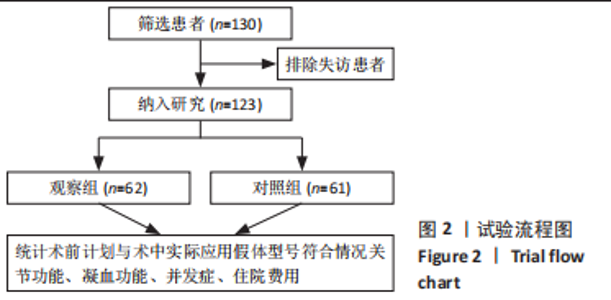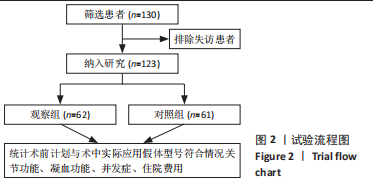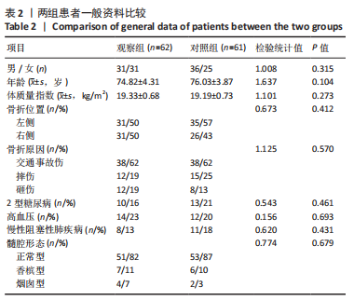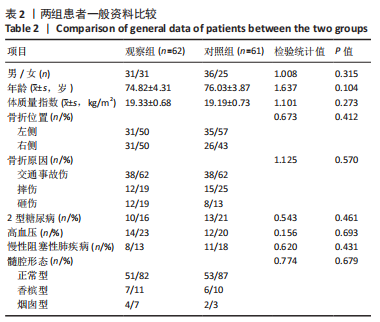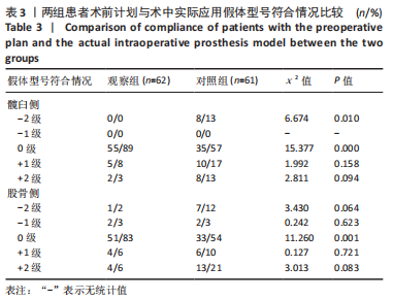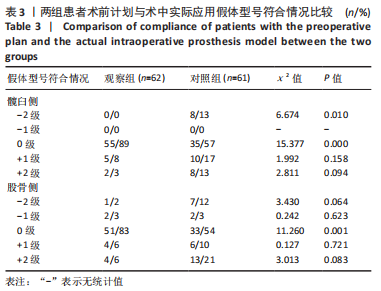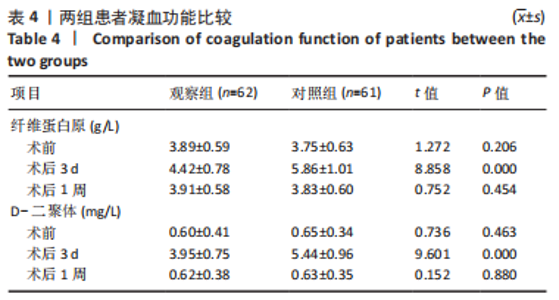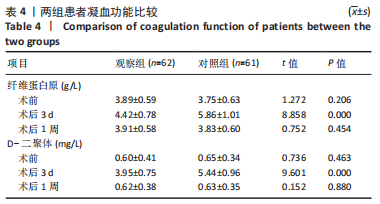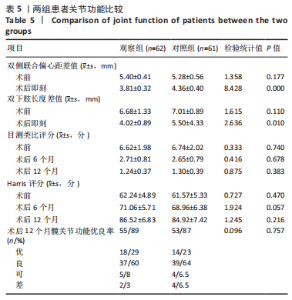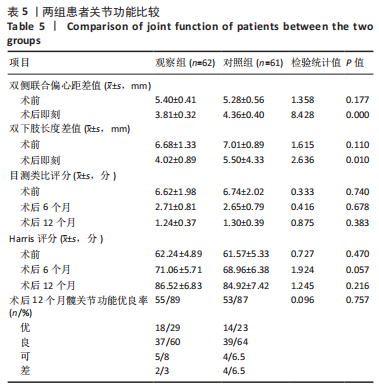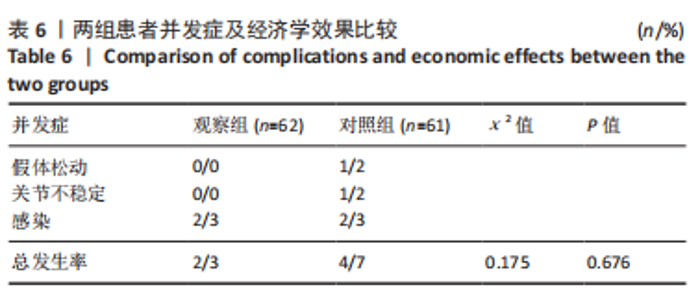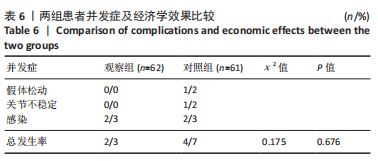[1] CHANG SM, HOU ZY, HU SJ, et al. Intertrochanteric femur fracture treatment in asia:what we know and what the world can learn. Orthop Clin North Am. 2020; 51(2):189-205.
[2] CRAWFORD DA, BEREND KR. Reduction of periprosthetic proximal femur fracture in direct anterior total hip according to stem design. Orthop Clin North Am. 2021;52(4):297-304.
[3] EKHTIARI S, GORMLEY J, AXELROD DE, et al. Total hip arthroplasty versus hemiarthroplasty for displaced femoral neck fracture:asystematic review and meta-analysis of randomized controlled trials. J Bone Joint Surg Am. 2020; 102(18):1638-1645.
[4] 莫华贵,黄远翘,马滚韶,等.CT测量在髋关节发育不良患者初次全髋关节置换中的临床应用[J].中国医师杂志,2020,22(1):80-83.
[5] HUO J, HUANG G, HAN D, et al. Value of 3D preoperative planning for primary total hip arthroplasty based on artificial intelligence technology. J Orthop Surg Res. 2021;16(1):156.
[6] 芮敏,顾家烨,张云庆,等.数字化三维重建技术在髋关节发育不良全髋关节置换术中的应用[J].临床骨科杂志,2019,22(2):165-168.
[7] 郑亚红,杨丽萍.铒激光结合卤米松乳膏对结节性痒疹的恢复情况及对血清P物质水平,瘙痒视觉模拟评分的影响[J].中国中西医结合皮肤性病学杂志, 2021,20(3):264-267.
[8] 高瑞红,高玉军.舒筋活血汤联合低分子肝素对髋关节置换术患者DVT形成,Harris评分及运动功能的影响[J].贵州医药,2020,44(3):428-430.
[9] HUDDLESTON JI 3RD, DE A, JAFFRI H, et al. Cementless fixation is associated with increased risk of early and all-time revision after hemiarthroplasty but not after tha for femoral neck fracture:results from the american joint replacement registry. Clin Orthop Relat Res. 2021;479(10):2194-2202.
[10] MATHUR H, SHAH S. A rare case of bilateral fracture neck femur treated with bilateral distal loading stem total hip arthroplasty,in a single sitting. J Orthop Case Rep. 2020;10(5):9-11.
[11] ZHANG J, ZHU J, LIU Z, et al. Predictive factors associated with the clinical outcome of intertrochanteric hip fracture in high-risk elderly patients treated with total hip arthroplasty versus percutaneous external fixation. Ann Transl Med. 2021;9(9):740.
[12] 苗鹏.多层螺旋CT三维重建辅助3D打印技术对复杂髋臼骨折手术的分析[J].中国CT和MRI杂志,2021,19(12):163-166.
[13] 田润,雷雨田,王坤正,等.机器人辅助人工全髋关节置换术中及术后测量髋臼角度比较研究[J].中国修复重建外科杂志,2021,35(10):1246-1250.
[14] 吴东,柴伟,刘星宇,等.人工智能全髋关节置换术髋臼杯放置算法的实验研究[J].中华骨科杂志,2021,41(3):176-185.
[15] ROUZROKH P, WYLES CC, PHILBRICK KA, et al. A deep learning tool for automated radiographic measurement of acetabular component inclination and version after total hip arthroplasty. J Arthroplasty. 2021;36(7):2510-2517.e6.
[16] ALASTRUEY-LÓPEZ D, EZQUERRA L, SERAL B, et al. Using artificial neural networks to predict impingement and dislocation in total hip arthroplasty. Comput Methods Biomech Biomed Engin. 2020;23(10):649-657.
[17] KLEMT C, YEO I, COHEN-LEVY WB, et al. Artificial neural networks can predict early failure of cementless total hip arthroplasty in patients with osteoporosis. J Am Acad Orthop Surg. 2022;30(10):467-475.
[18] 丁冉,王淇,刘烨,等.人工智能三维术前规划在全髋关节置换术中的应用和准确性分析[J].生物骨科材料与临床研究,2022,19(2):33-38.
[19] DING X, ZHANG B, LI W, et al. Value of preoperative three-dimensional planning software (AI-HIP) in primary total hip arthroplasty:a retrospective study. J Int Med Res. 2021;49(11):3000605211058874.
[20] 霍佳邦.基于AI技术的三维术前规划在初次全髋关节置换术的应用[D].广州:南方医科大学,2021.
[21] 李扬,吕辉,黄邓华,等.组配式假体与一体式假体修复CroweⅢ-Ⅳ型发育性髋关节发育不良的初始稳定性[J].中国组织工程研究,2022,26(18): 2839-2843.
[22] 赵资坚,张荣臻,蔡史健,等.3D打印技术在发育性髋关节发育不良继发骨性关节炎全髋关节置换术中的应用[J].中国骨与关节损伤杂志,2022, 37(4):346-350.
[23] DEBBI EM, QUEVEDO GONZÁLEZ FJ, JERABEK SA, et al.Three-Dimensional Functional Impingement in Total Hip Arthroplasty:A Biomechanical Analysis. J Arthroplasty. 2022;37(7S):S678-S684.
[24] 吴东,刘星宇,张逸凌,等.人工智能辅助全髋关节置换术三维规划系统的研发及临床应用研究[J].中国修复重建外科杂志,2020,34(9):1077-1084.
[25] 乔昌龙,张晓宁,房廷豪,等.老年患者凝血功能变化及骨科手术凝血相关并发症[J].国际麻醉学与复苏杂志,2022,43(3):288-293.
[26] 姜蓉,吴芳芳,徐友康,等.那曲肝素和利伐沙班应用于髋关节置换术后抗凝对患者凝血相关指标水平影响[J].山西医药杂志,2021,50(8):1280-1282.
[27] CHENG J, FU Z, ZHU J, et al. The predictive value of plasminogen activator inhibitor-1,fibrinogen,and D-dimer for deep venous thrombosis following surgery for traumatic lower limb fracture. Ann Palliat Med. 2020;9(5):3385-3392.
[28] XU H, XIE JW, YANG JL, et al.Role of D-dimer and Fibrinogen in the Diagnosis of Periprosthetic Joint Infection:A Systematic Review and Meta-Analysis. Orthop Surg. 2021;13(3):692-700.
[29] 高礼层,陆军帅,朱玮,等.利伐沙班与低分子肝素对髋关节置换患者凝血功能的影响[J]. 检验医学与临床,2021,18(3):340-342,347.
[30] 刘玮.血栓弹力图监测止凝血功能在择期骨科手术患者输血中的效果[J].实用临床医药杂志,2020,24(20):11-14.
[31] 杨滨,张克,袁亮,等.三维术前规划在全髋关节置换术中的应用[J].中国矫形外科杂志,2022,30(7):653-656.
|
